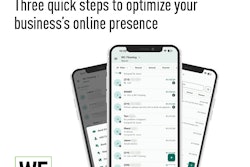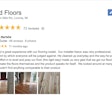

It's the busy season. The phone is ringing, the weather is ideal, and the projects are lining up. Money is flowing. You're hiring (or trying to)! Business is so good that you bought a new trailer and new tools, and you even booked a vacation. You're looking to find a bigger shop or office, and you're even considering bringing on a sales person. This is finally the year your company turns the corner!
Then November shows up. Suddenly, you'd give your left pinky for a lead. It seems like a nice project is about as common as an alien sighting. Forget the new shop and office—fire the sales guy and just go back to working alone in the field.
It doesn't have to be like this. In my experience, there is one big mistake contractors make that spurs the November Blues I'm singing about, and in this column I'd like to share what it is and how to overcome it. But before I address that, you need to know…
You need to have a marketing plan
You built it, so they should come, right? Or better yet, you do good work, so your phone should ring! Sure, doing great work is important. Everyone expects that. But doing great work alone is not a marketing plan. Your marketing plan should specify who your ideal clients are, how you'll reach them, what you will spend each month and when you will deploy certain strategies and tactics. That's a simple place to start.
The sad truth is that even though most of you reading this are amazing craftsmen and women with monster work ethics, you can be incredibly lazy when it comes to marketing and selling yourselves.
Here's my challenge: Take half the effort you put into developing your hardwood flooring skills and put it into marketing. I bet your life changes dramatically.
Aggressively market yourself—even when you're busy
This mistake is keeping you in a J.O.B (Just Over Broke): You are not aggressively marketing your business when you're busy. If you take your foot off the gas, you will pay for it months later. True marketing is about building a brand, and that takes time and consistency.
Most contractors get caught up in the jobs right in front of them and fail to see that their No. 1 job is to sell. And you can't sell unless you are marketing 365 days per year.
Leads generally come six to 18 months after your marketing. Sure, there are the lead generation sites and ads you can pay for, but building a brand that is top-of-mind in your area takes a commitment of your resources over time. As the Chinese proverb goes, "The best time to plant a tree is 20 years ago; the second-best time is now.
RELATED: Two Ways to Make Sure You're Not Stealing from Your Family
So what does aggressive marketing look like? Here are three practical things you can implement that will ensure you don't fall into the trap of not marketing your business when you're busy.
1) Know how many leads you will need to hit your sales goal
Business is math. Plain and simple. How many leads do you need? I've found most contractors have no idea. How do you know you're on track if you don't get clarity about this fundamental aspect of running your business?
Here's a quick way to figure out how many leads you need: Write down your sales goal, closing rate and average job size. Then, do a little math. Here's an example:
Sales goal: $1.2 million
Closing rate: 45%
Average job size: $12,500
Take your sales goal and divide it by your average job size, so:
$1.2 million ÷ $12,500 = 96
This lets you know that you need to sell and produce 96 jobs.
To find the number of leads you'll need to get this many jobs, take the number of jobs needed and divide by the decimal form of your closing rate:
96 ÷ 0.45 = 213
This tells you you'll need 213 leads in order to sell the number of jobs you'll need to reach your sales goal.
Start with this simple math and then monitor it each week to make sure you're on track. In our example, 213 leads equate to about 18 leads per month.
2) Create a marketing calendar
Who are your ideal clients? Where will you find them? What tools will you use to engage them? How much money will you spend to attract them? When will you spend that money?
These are questions that can be addressed and mapped out ahead of time so all you need to do is implement them each month.
3) Have a weekly sales meeting
Set a regular time each week to go over what leads came in and what work was sold. Use your customer relationship management tool, a spreadsheet or a simple piece of paper. The point is to do it!
This one action will keep your eyes focused on where you're headed and will provide you the information needed to ensure you don't get caught off guard when the phone goes silent in November.
It's easy to get distracted with all the responsibilities pulling at you as you run your wood flooring business. Just remember that you might not have much of a business unless you have a serious commitment to marketing year-round.
Want a free Marketing Calendar Template? Email us here and put the words "Marketing Calendar" in the subject line, and my team will send it to you.































